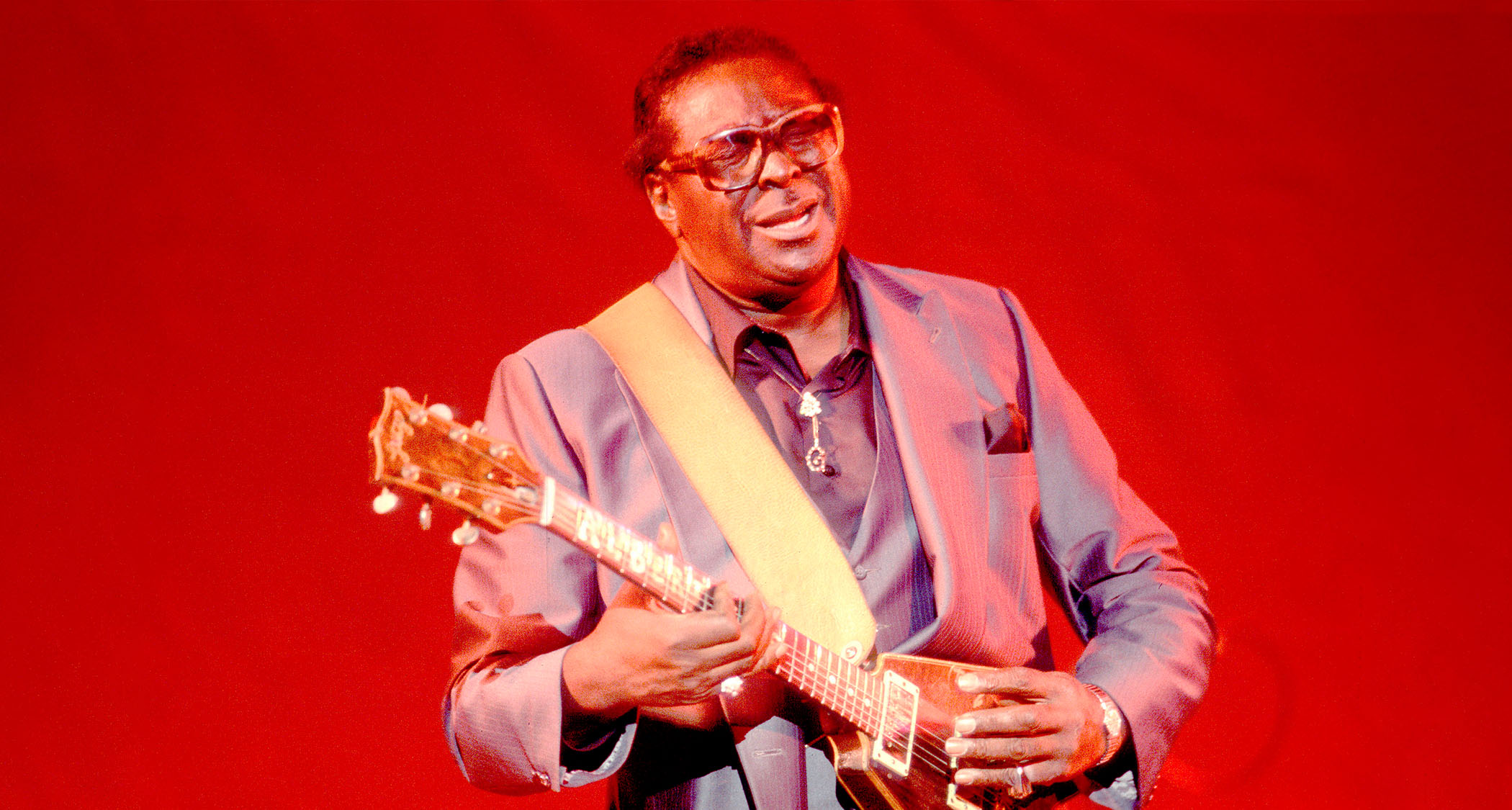If you’re only bending strings with your second and third fingers, you’re missing out – strengthening your first and fourth fingers will help you express yourself like the greats
Blues heroes like Albert King and Stevie Ray Vaughan used their first and fourth fingers to bend – without support – to powerful effect. And with a bit of practice, you can learn their expressive solo techniques, too

The ability to bend notes is a facility not afforded to all instruments. This great technique, along with vibrato, allows guitarists to play with expression, often mimicking the fluidity of a singer.
The second and third fingers of the fretting hand are generally the preferred choice for string bends since they are much stronger than the fourth finger. They also allow the option of using additional fingers for support, which the first finger doesn’t.
However, these less commonly used digits can be employed to great effect, as seen in the accompanying examples and study piece.
One guitarist who is well known for using his first finger to bend strings is Albert King, who in turn inspired other blues guitarists such as Stevie Ray Vaughan. Albert played the guitar in a different way to many.
As a left-hander, he used a standard guitar flipped over to accommodate his style, although with the strings still strung right-handed (so now with the first string at the top).
This allowed King to pull this string down with his first finger to achieve extremely wide bends, often several semitones in pitch. King’s size and power helped him achieve these bends; due to his huge frame and large hands he was able to bend with ease.
Many guitarists are already using their first finger for bends, albeit the blues-inspired quarter-tone bend or ‘curl’ that’s commonplace in rock and blues.
However, the fourth finger is one that most guitarists don’t use much, if at all. The big benefit of using the fourth finger is that it allows the player to maintain hand position, without having to shift out of position to use the trusted third finger.
The problem with the fourth finger is that it isn’t as strong as the other three. Therefore it’s recommended that some or even all of the remaining digits are used to support it.
Fourth-finger bends might be challenging at first, but it’s a technique well worth investing in. Lighter gauge strings, or a shorter-scale guitar (Gibson rather than Fender) are other ways of making this a little easier.
Of couse, intonation is vital. Your bends should always be in tune and this becomes harder when using weaker fingers. Vibrato is another factor to think about, so both of these aspects may take a bit of work.
The following examples and study piece are based around a blues in the key of G, taking influence from a number of great guitarists including Albert King and Stevie Ray Vaughan, with a little of David Gilmour thrown in for good measure.
Examples
Example 1
This first example features G minor pentatonic bluesy quarter-tone bends using the first finger. Let your ears guide you as to how much to bend the strings here. Make sure you don’t hold the quarter-tone bend or it will sound dissonant; it’s a fleeting note that’s more about feel than actual pitch.
Example 2
First-finger quarter tone bends are used again in this example. The first bar features some double-stop bends that Chuck Berry or Angus Young might play, before moving to shape 2 of the G minor pentatonic scale.
Example 3
Here’s our first encounter with fourth-finger bends. The bridging phrase at the end of bar one makes use of the G major pentatonic scale, while the main lick uses two octaves of G minor pentatonic. I would recommend pulling the strings down for these bends.
Example 4
This example uses first-finger semitone and tone bends using shape #4 of the G minor pentatonic scale. This may be challenging at first if you aren’t used to using the first finger to bend up a whole tone. I would recommend bending these strings upwards but you should explore downward bends too.
Example 5
The final example starts off with a fourth-finger bend. The third finger would be easier, but try it with your fourth (with any spare fingers behind it for support). The set of bends in the second bar features a David Gilmour-style bend where the first finger is used to play a semitone and tone bend in one movement.
Study Piece
Bars 1-4 We start our study in style with a fourth-finger, minor 3rd bend. You’ll need to use some or all of the remaining fingers to support it. This is followed by a first-finger bend, taking the the Bb note up a tone to C. You should notice that this study is based mainly around shape 4 of the G minor pentatonic scale.
Bars 5 -12 More first-finger bends here, with some repetitive blues-influenced minor pentatonic licks. The first finger gets worked quite hard here, which can be challenging if you prefer heavier gauge strings.
Bars 13 -16 This section features the same lines as found in the opening four-bar turnaround lick at the start of the piece. It comes to a close with a double-stop phrase that outlines the 3rd and b7th degrees of the G7 chord.
Get The Pick Newsletter
All the latest guitar news, interviews, lessons, reviews, deals and more, direct to your inbox!
Simon is a graduate of the UK's Academy of Contemporary Music and The Guitar Institute, and holds a Masters degree in music. He teaches, examines and plays everything from rock to jazz.











